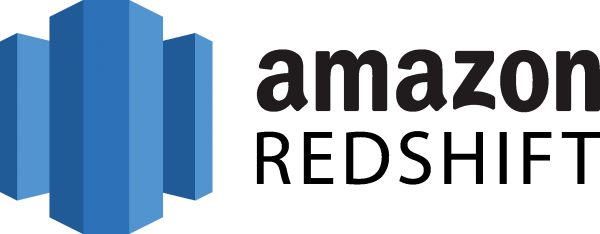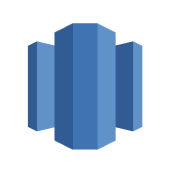Amazon Redshift is an online, petabyte-scale Data Warehouse service. It is dedicated to enterprise use, collecting large amounts of data and extracting analysis and insights from it. Redshift helps organizations query large DBs in real-time. Nonetheless, Redshift provides flexibility in performance as long as the cost aspect is well-handled to minimize cloud expenses. In this Redshift blog post, you will learn about Redshift data warehouse architecture, pricing strategy, cost reduction and Redshift cost optimization tips, the importance of Redshift cost control, and Redshift data warehousing competitors.
Table of Contents
What is Redshift?

Redshift is an analyzed data warehousing service where users can launch and query big data sets. It uses column-based fast storage, is meant for massive data analysis, and allows for parallelism. Redshift clusters are made of a leader node and compute nodes. The leader node is the one that decides where to send the query tasks, while the compute nodes are the ones that process the tasks. The system is highly scalable and very fast. It is also well formed to interconnect with other AWS services, including S3 RDS and EMR, for end-to-end data solutions.
Are you having trouble migrating your data into Redshift? With our no-code platform and competitive pricing, Hevo makes the process seamless and cost-effective.
- Easy Integration: Connect and migrate data into Redshift without any coding.
- Auto-Schema Mapping: Automatically map schemas to ensure smooth data transfer.
- In-Built Transformations: Transform your data on the fly with Hevo’s powerful transformation capabilities.
- 150+ Data Sources: Access data from over 150 sources, including 60+ free sources.
You can see it for yourselves by looking at our 2000+ happy customers.
Get Started with Hevo for FreeRedshift Pricing
| ra3.4xlarge | On-Demand | Reserved Instance |
| Hourly Rate | $3.26 | $2.18 |
| Savings over On-Demand | 0 | 33% |
| Type | N/A | Standard RI |
| Terms | N/A | Partial upfront 1 year |
| OS | Linux | Linux |
| Region | US East (N. Virginia) | US East (N. Virginia) |
Amazon Redshift pricing is based on a pay-as-you-go model, with charges for the following:
- On-Demand Pricing: Ranging from $0.25 per hour for a single DC2.Large node.
- Reserved Instances: By making long-term commitments, savings of up to 75% over on-demand pricing can be achieved.
- Spectrum Query Pricing: Priced at $5 per terabyte for data scanned to query data in S3.
It is bundled with compute cost and provides up to 160 GB per node. Price may differ according to region and different types of nodes. You can also calculate your cost by AWS Pricing Calculator.
AWS Redshift Cost Optimization Best Practices
- Select Correct Node Type and Node Sizing
To begin with, choose the type and size of the node that will perform best for your kind of workload. Amazon Redshift provides RA3 nodes with integrated, fully managed storage to free up resources for scalable computing on storage. This can lower costs since more resources than required can be eliminated. - Use Reserved Instances (RIs)
Reserved Instances are 66% cheaper than on-demand instance prices, providing up to 75% in savings. Based on the current demand level, compare your loads. If it’s steady and longer-term, claim for the 1-year or 3-year agreement, though you will likely get higher discounts. - Pause and Resume Clusters
For nonproduction workloads, which are development/testing workloads, try to utilize pause and resume to avoid being charged during idle time. You will still be charged for storage, but compute rates go on hold. - Leverage Concurrency Scaling
Where certain workloads are episodic or bursty, use Concurrency Scaling to add head to the process when required. It allows dynamic scaling, which means you don’t have to keep additional resources beyond what you currently need, thus only incurring minimal additional expenses. - Compress Data
The problem can also be addressed effectively by taking advantage of Redshift’s in-built compression features, which would also help in bringing down storage costs. Reducing the data size minimizes disk space required and improves efficiency, hence the cost required on disks and disk operations. - Supervise and Employ Trusted Adviser
Although AWS Trusted Advisor is quite new, it allows real-time recommendations on all cost-saving opportunities. While generating resource utilization reports, track your cluster’s overall CPU utilization and free resources. Thus, outsourcing or consolidation representing starved clusters may lead to considerable cost reduction. - Optimize Query Performance
Try to analyze and vacuum your tables as often as possible to see how queries are improved when using a vacuumed table. Maintain proper distribution and sort keys to reduce data shifting, ensure your query runs faster, and reduce your costs.
For a deeper dive, read our full article: Data warehouse best practices
Any Alternatives
Despite these merits of Amazon Redshift, it is wise to look into other platforms that would serve better depending on some of the tasks, speed, or even cost. Below are some detailed alternatives to Amazon Redshift:
1. Redshift Spectrum
Amazon Redshift Spectrum is an AWS service that gives you the power to organize exabytes of data in Amazon S3 and query them as if they were Redshift tables. This scalable and eventually consistent query engine allows you to perform data analysis on massive amounts of data with a low TCO. It supports various data formats, including parquet, ORC, JSON, and CSV.
2. Redshift AQUA (Advanced Query Accelerator)
Based on these features, Redshift AQUA (Advanced Query Accelerator) can be named.
Redshift AQUA is a targeted caching engine that utilizes hardware to accelerate queries and move heavy computational load into severity hardware. This is meant to enhance the performance of scans or filter and aggregation routines that must search through the table. It offers up to ten times better query performance relative to some types of workloads.
3. Google BigQuery
Google BigQuery is a mass storage analysis on the Google Cloud Platform that processes data in the Google Cloud storage. It is used to perform fast query in SQL utilizing the computational power of Google. And as we have seen above, it does away with the need to have the infrastructure in place. Allows streaming of data for real-time analyses. The built-in machine learning engine of BigQuery is termed as BigQuery ML.
4. Snowflake
Snowflake is a data warehousing built from the ground up for cloud architecture, where compute and storage are fully decoupled and can be scaled independently. It supports open shift’s container based architecture and infrastructure and runs on AWS, Azure and Google Cloud.
5. Azure Synapse Analytics
Azure Synapse Analytics actually integrates EDW and Big Data analysis into a single system. For this reason, it harmonizes with other Azure services, forming an integrated solution for analytics. It combines SQL data warehousing, Spark, and Data Explorer engines. Integrates well with other Azure solutions such as Azure Machine Learning, Power BI as well as other services. Can handle on premise and cloud-based data sources.
6. Oracle Autonomous Data Warehouse
Oracle’s Autonomous Data Warehouse is a provision of data warehouse service in the Oracle Cloud that is embedded with machine learning to perform fundamental tasks such as provision, configure, secure, tune, scale, and repair the data warehouse. Their self-managing capabilities thus reduce administrative tasks. High-performance queries and analytics, highly optimized. Besides the basic security option, they have additional features like always-on encryption.
Selecting the Right Option
When evaluating alternatives to Amazon Redshift, consider the following factors:
- Workload Characteristics: You must learn how your data is structured, how complex your queries will be, how many concurrent accesses you will allow, and how delay-sensitive your application is.
- Integration Needs: Think of how compatible the alternative is with your current solutions, apps, and cloud scenarios.
- Cost Implications: Price structures vary especially storage charges for data, charges for CPU usage and any extra charges for data transfer or for using extra services.
- Scalability and Flexibility: Determine the flexibility with which you are able to increase or decrease the number of resources depending on the levels of work load.
- Vendor Support and Community: Assess reliability of technical support and availability of documentation and communities, respectively.
Integration of Services to Achieve the Best Outcome
In some cases, a hybrid approach might offer the best balance of performance and cost-efficiency:
- Redshift with Spectrum: Well, use Amazon Redshift for your hot data and Redshift Spectrum when you have cold data stored in S3.
- Integrating Multiple Tools: Take advantage of what each of the tools offers; for instance, Snowflake can be integrated for multi-cloud advantage, but specific analytics tools can be used.
Through a careful examination of the particular needs of your organization and consideration of both standalone and hybrid choices, it becomes possible to find the optimal data warehousing strategy that matches both your performance goals and your financial restrictions.
Conclusion
Amazon Redshift is an efficient and scalable database offered by the company, an investment in that does not pinch users heavily. Nevertheless, cost-efficient strategies should be used to increase Redshift’s revenue, including right-sizing, optimizing queries, and storing reserved instances. Thus, organizations can have an efficient and economically sustainable way of expanding their data operations. Additionally, looking for alternatives is also useful when selecting the appropriate solution depending on the service requirements and prices.
Explore the benefits of Amazon Redshift RA3 nodes for better resource management and scaling. Discover details at Amazon Redshift RA3.
Amazon Redshift RA3 nodes enable you to scale compute and storage independently, improving cost efficiency and performance. Learn more about how RA3 nodes optimize data warehousing at Redshift RA3 Node.
FAQs on AWS Redshift Cost Optimization
How to save costs on Redshift?
There are several ways to reduce costs on Amazon Redshift: purchase Reserved Instances, suspend the unused clusters, as well as use the RA3 nodes. Also, it helps by compressing your data, improving the speed of your queries, and Concurrency Scaling to cope with high loads without having to allocate marginally needed resources.
Is Redshift more expensive than RDS?
Yes, Redshift is costlier than RDS mainly because Redshift is primarily designed for large-scale data warehouses and analytical processing workloads. RDS is more flexible for highly transactional and relatively small databases, and it normally costs less for that kind of usage.
How much does Redshift render cost?
Amazon Redshift prices from a basic rate of $0.25 per hour for the DC2.Large nodes. RA3 nodes with managed storage cost $1.086 per hour for the RA3.xlplus instance, with further charges for data storage and query use. The pricing is determined on the basis of the instances and location, too.












